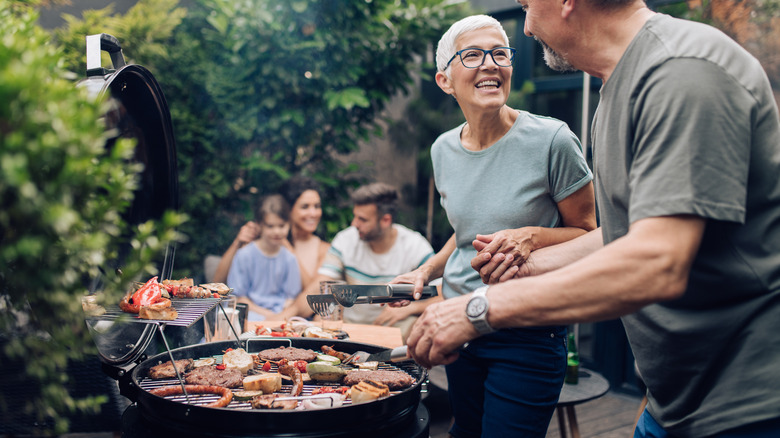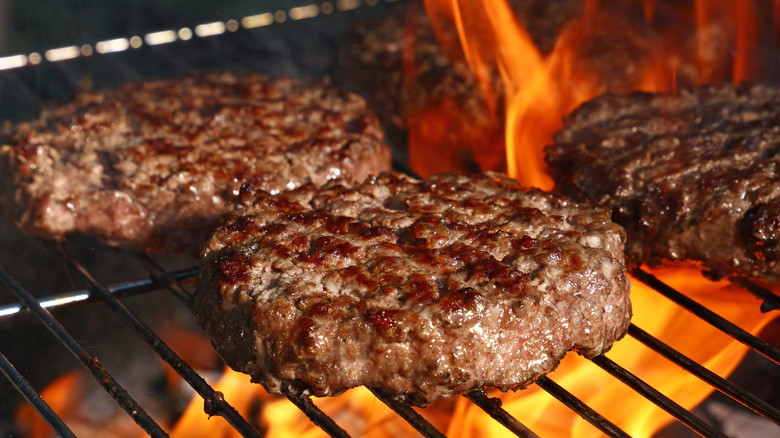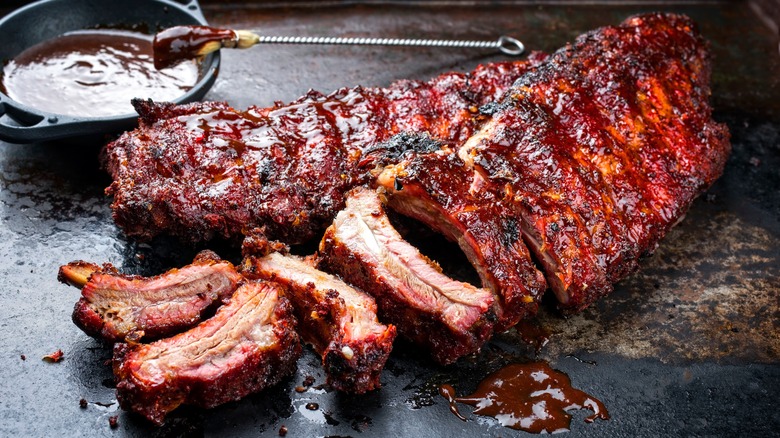What Is The Difference Between Barbecuing And Grilling?
The world of cooking is filled with an entire glossary of terms used to describe how a food is being cooked, with the meaning of some words being a bit more obvious than others. For example, it's not too difficult to infer that "boiling" means cooking something in boiling water, but "blanching," complicates things a bit by boiling foods, and then plunging them in an ice bath to halt cooking. "Grilling" and "barbecuing" are cooking terms that seem straightforward, but they are often incorrectly used interchangeably. There are similarities between the two cooking methods, but they require very different techniques.
Both grilling and barbecuing take place on a grill. Confusingly, this equipment can also be called a "barbecue grill," but you don't need a special type of grill to barbecue. To complicate matters even further, a "barbecue" can refer to an outdoor party or picnic where food is served, but just because it's called a barbecue doesn't mean any barbecuing is happening. Barbecuing and grilling are distinct methods that produce unique dishes, and once you know the difference, you'll be able to tell if your next barbecue is the real deal, or if the chef is actually grilling.
Grilling utilizes high, direct heat
When you grill something, you're cooking it over an open flame, and therefore a high temperature, usually at least 400 degrees Fahrenheit. Because of the high heat, grilling is typically a much faster process than barbecuing. Grilled foods come into close proximity to the fire, which creates the opportunity to give the food a nice sear, or browned, flavorful crust. The hood of the grill is usually kept open while grilling since keeping it closed at such high temperatures might quickly burn the food. Grilling is quite simple. As long as the grill is burning at an appropriate temperature, all the chef needs to do is flip the food halfway through its cooking time, and make sure nothing catches on fire.
Grilling is an incredibly versatile cooking technique, more so than barbecuing. You can grill anything from fruits and veggies to seafood kebabs and steaks. Some of the most popular foods served at a barbeque, like hamburgers and hotdogs, are often grilled. That's how they get those picture-perfect grill lines that make them even more appetizing. Like any cooking method, grilling takes some practice, but it is overall an uncomplicated way to get food on the table.
Barbecuing takes more time
Barbecuing requires a bit more know-how and finesse. The key to barbecuing is to use low temperatures, usually around 250 degrees Fahrenheit, and to maintain that temperature for several hours. Depending on what you're cooking, barbecuing can even take an entire day. Because it takes so long, barbecuing requires sustained attention from the cook so they can ensure that the grill stays at the proper temperature. This is simpler with a gas grill since you typically only need to adjust the burners and keep the grill hood closed, but if you're using a charcoal grill, you will have to regularly check the temperature and add more charcoal when necessary.
Another difference between barbecuing and grilling is that while grilling usually focuses on cooking small, individual servings (like five separate hamburgers, a row of asparagus, etc.), barbecuing is used to cook larger items. One might barbecue an entire rack of ribs, or a whole pork leg, and then carve off servings from those large cooked cuts. Since the grill hood stays closed, barbecued meat is imbued with smoke that creates the iconic smokey, barbecue flavor. Barbecuing takes time, but it leads to an incredibly deep, delicious taste that is worthy of a party.


